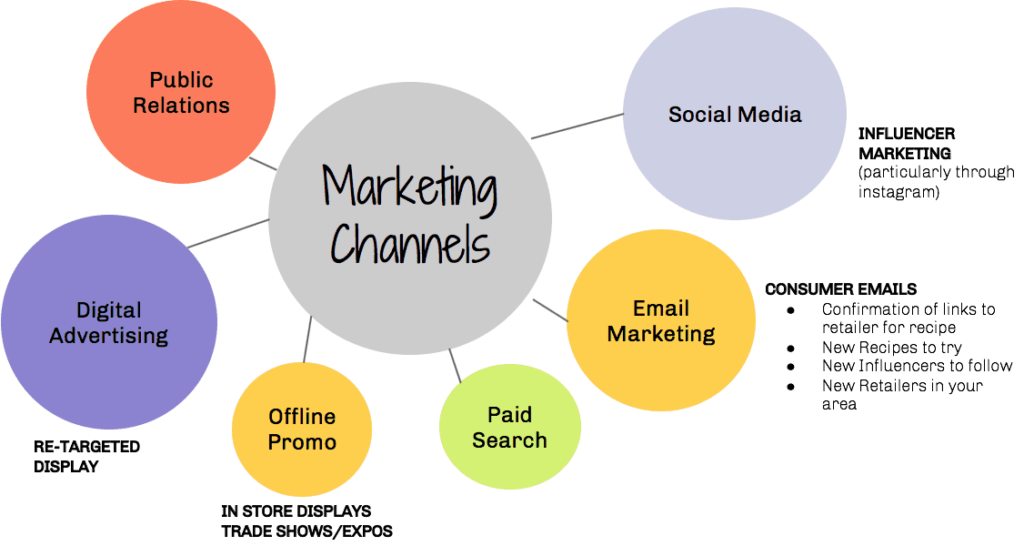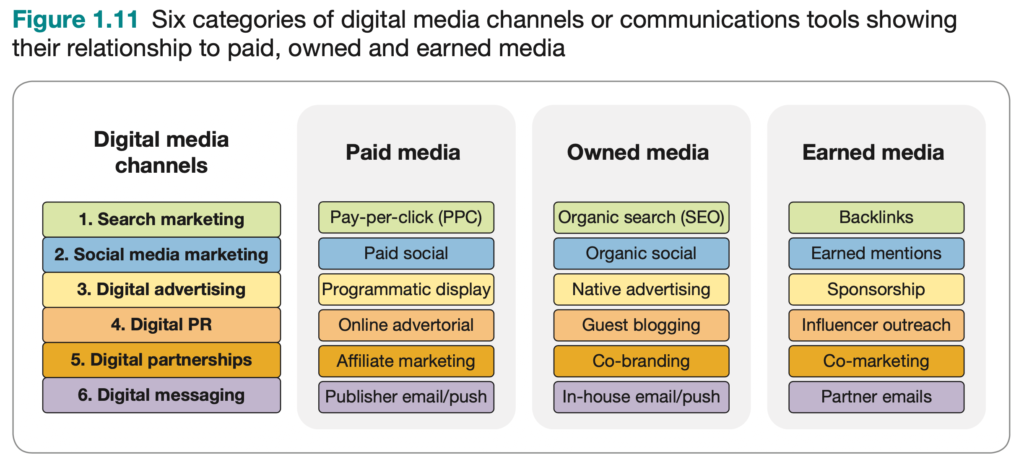
In order to effectively promote your business or product, it is crucial to understand the various types of advertising channels available. From traditional methods such as television and radio commercials, to digital platforms like social media and email marketing, each channel offers unique opportunities to reach and engage with your target audience. By exploring the diverse array of options at your disposal, you can tailor your advertising strategy to maximize your brand’s visibility and impact. Let’s take a closer look at the different types of advertising channels and how they can benefit your business.
Traditional Advertising Channels
Print Media
Print media refers to advertising channels that are in physical, printed form. This includes newspapers, magazines, brochures, and catalogs. Print media has been a popular advertising option for many years, allowing businesses to reach a wide audience through distribution outlets. Newspapers and magazines are often targeted towards specific demographics, allowing advertisers to tailor their message to a particular audience. Brochures and catalogs are commonly used to provide detailed information about products or services.
Broadcast Media
Broadcast media encompasses television and radio advertising. These channels have traditionally been influential in reaching a large audience. Television commercials allow businesses to showcase their products or services through visually appealing and persuasive advertisements. Radio advertisements, on the other hand, rely on audio to communicate with listeners. Both television and radio advertising often incorporate catchy jingles or memorable slogans to leave a lasting impression on consumers.
Outdoor Advertising
Outdoor advertising utilizes various physical spaces to capture the attention of individuals outside their homes. Billboards are one of the most popular forms of outdoor advertising, providing businesses with a platform to display large-scale advertisements in high-traffic areas. Transit advertising takes advantage of public transportation systems, such as buses or trains, by placing advertisements on their exteriors or interiors. Point of sale displays, commonly found in retail environments, aim to draw customers’ attention to specific products or promotions. Street furniture advertising involves placing advertisements on items such as bus shelters or benches.
Direct Mail
Direct mail refers to physical mail sent directly to potential customers’ mailboxes. This form of advertising includes postcards, letters, or even product samples. Direct mail campaigns allow businesses to target specific geographic areas or demographics, providing a personalized and tangible experience for recipients. While it may seem old-fashioned compared to digital advertising, direct mail can still be an effective way to engage with consumers and promote products or services.
Digital Advertising Channels
Search Engine Marketing (SEM)
Search Engine Marketing (SEM) is a digital advertising channel that focuses on increasing a website’s visibility in search engine results pages. It involves both Search Engine Optimization (SEO) and paid search advertising. SEO optimizes website content, structure, and other factors to improve organic search rankings. Paid search advertising, often referred to as Pay-Per-Click (PPC) advertising, allows businesses to bid on relevant keywords and display ads alongside search results.
Social Media Advertising
Social media advertising leverages platforms such as Facebook, Instagram, Twitter, and LinkedIn to reach target audiences. By utilizing targeted demographics, interests, or behaviors, businesses can create tailored ads that appear on users’ feeds. Social media advertising allows for precise audience targeting, engagement with comments and shares, and the opportunity to enhance brand awareness and customer loyalty.
Display Advertising
Display advertising involves the placement of static or interactive ads on websites, apps, and social media platforms. Advertisements can take the form of banners, pop-ups, or videos. This form of advertising aims to capture the attention of website visitors by prominently displaying relevant ads. Display advertising often utilizes visual elements, such as attractive imagery or animated graphics, to engage users and encourage them to click through to the advertiser’s website.
Email Marketing
Email marketing involves sending promotional messages or newsletters directly to a targeted list of email subscribers. This channel allows businesses to communicate directly with their customers, providing updates on new products, discounts, or upcoming events. Email marketing campaigns can be tailored to specific segments of a subscriber list, ensuring that recipients receive relevant and personalized content. By optimizing subject lines, content, and call-to-action buttons, businesses can increase open rates and conversions.
Influencer Marketing
Influencer marketing capitalizes on the popularity and trust that influencers have built with their followers. Influencers are individuals with a significant online following, often in specific niches or industries. Brands partner with influencers to promote their products or services through sponsored content. This advertising channel can be particularly effective as influencers have established credibility and influence over their audience. Collaborating with influencers allows businesses to tap into their followers’ trust and connect with consumers in an authentic and influential way.

Online Advertising Channels
Pay-Per-Click (PPC)
PPC advertising is a model where advertisers pay each time someone clicks on their online ad. This form of online advertising commonly appears on search engine results pages or websites. Advertisers bid on keywords or ad placements to have their ads displayed to relevant audiences. PPC advertising allows businesses to reach potential customers who are actively searching for products or services, making it a highly targeted and cost-effective advertising channel.
Social Media Advertising
Social media advertising has already been discussed earlier in the article. Please refer to the previous section for more information on this online advertising channel.
Banner Advertising
Banner advertising involves placing static or animated display ads on websites, blogs, or online platforms. These ads are typically rectangular or square in shape and can be placed at the top, side, or bottom of webpages. Banner ads can include images, text, or multimedia components to capture users’ attention and encourage them to click through to the advertiser’s website. This form of online advertising allows businesses to promote their brand, products, or services in a visually appealing and targeted manner.
Video Advertising
Video advertising utilizes video content to promote brands, products, or services. This can include pre-roll ads that play before online videos, mid-roll ads that appear during video content, or even sponsored content within video platforms. Video advertising allows businesses to engage with audiences through compelling visual storytelling and can be highly effective in conveying messages or showcasing products or services in action.
Native Advertising
Native advertising integrates promotional content seamlessly within editorial or organic content, making it appear more native and less intrusive. These advertisements blend in with the surrounding content, providing a non-disruptive experience for users. Native ads can be found on websites, blogs, social media platforms, or even within mobile apps. This advertising channel aims to provide valuable or entertaining content that aligns with the platform’s format, allowing businesses to build trust and brand affinity with their target audience.
Mobile Advertising Channels
In-App Advertising
In-app advertising involves displaying ads within mobile applications. These ads can take different forms, including banner ads, interstitial ads, or video ads. In-app advertising allows businesses to reach users while they are engaged with mobile apps, providing opportunities for targeted messaging and high user engagement. By utilizing mobile app data, businesses can deliver personalized ads that align with users’ interests or behaviors.
Mobile Web Advertising
Mobile web advertising focuses on delivering ads to users browsing the internet from their mobile devices. These ads can be displayed within mobile-optimized websites, mobile search engine results, or even in mobile app browsers. Mobile web advertising allows businesses to target users based on their location, device type, or browsing behavior. By providing a seamless and optimized user experience, businesses can effectively reach mobile audiences and encourage engagement with their ads.
Push Notifications
Push notifications are alerts sent directly to users’ mobile devices through apps they have installed. While they are commonly used for app-specific updates or reminders, businesses can also utilize push notifications as an advertising channel. These notifications can promote new products, deliver personalized offers, or provide valuable information to users. However, it is important to use push notifications responsibly and provide users with the option to opt-in or customize their notification preferences.
App Store Optimization
App Store Optimization (ASO) involves optimizing mobile app listings to improve their visibility within app store search results. Similar to search engine optimization, ASO focuses on keywords, app descriptions, screenshots, and user reviews to increase app discoverability and downloads. By optimizing app store metadata and appealing to target keywords and phrases, businesses can attract more organic traffic and increase app installations.

Outdoor Advertising Channels
Billboards
Billboards are large outdoor advertising structures that display advertisements to passing pedestrians or motorists. They are often placed along major roadways or in densely populated areas to maximize their visibility. Billboards typically feature eye-catching visuals, minimal text, and memorable slogans to make a lasting impression on viewers. This advertising channel allows businesses to reach a wide audience and reinforce their brand messaging through repeated exposure.
Transit Advertising
Transit advertising takes advantage of public transportation systems to reach a captive audience during their daily commutes. This can include placing ads on buses, trains, subway stations, or even inside vehicles. Transit ads can be displayed on the exteriors or interiors of vehicles, ensuring that they are seen by a diverse range of commuters. By targeting specific routes or locations, businesses can effectively reach their target audience while they are on the move.
Point of Sale Displays
Point of sale displays refers to advertising materials or fixtures placed near checkout counters or in-store entrances. These displays aim to capture customers’ attention while they are making purchasing decisions. Point of sale displays can include posters, banners, or even interactive digital screens. By showcasing special promotions, new products, or limited-time offers, businesses can influence consumers’ buying decisions at the point of sale and increase sales.
Street Furniture
Street furniture advertising involves placing advertisements on physical items found in public spaces, such as bus shelters, benches, or kiosks. These ads can be static posters or digital screens, targeting pedestrians and drivers alike. Street furniture advertising allows businesses to integratively weave their brand into the urban environment, making it an effective channel for capturing the attention of passersby.
Print Advertising Channels
Newspapers
Newspapers have long been a popular advertising channel for businesses to reach a localized or regional audience. Newspaper ads can take the form of classifieds, display ads, or even inserts. This traditional advertising medium allows businesses to target specific demographics or geographical areas. Newspapers are particularly effective for local businesses or for promoting events or sales within a specific community.
Magazines
Magazines offer a more niche and targeted advertising channel compared to newspapers. By selecting relevant publications, businesses can narrow down their reach and target audiences based on specific interests or demographics. Magazine ads can be highly visual and are often designed to align with the magazine’s aesthetics and content. This can provide businesses with a platform to showcase their products or services to a highly engaged and interested audience.
Brochures
Brochures are informative marketing materials that provide detailed information about a business, product, or service. They can be distributed in various ways, such as direct mail, trade shows, or in-store displays. Brochures typically contain visuals, text, and even charts or diagrams to convey information effectively. This print advertising channel allows businesses to deliver comprehensive information to potential customers in a tangible and portable format.
Catalogs
Catalogs are similar to brochures but focus specifically on showcasing a wide range of products or services offered by a business. They are often distributed through direct mail or included in newspapers or magazines. Catalogs can drive sales by presenting comprehensive product information, pricing, and ordering details in a convenient and visually engaging format. By strategically designing catalogs, businesses can create a desire for their products or services and encourage customers to take action.

Broadcast Advertising Channels
Television
Television advertising has been one of the most influential forms of advertising for several decades. Businesses can reach a wide audience by airing commercials during programs or events that attract their target market. Television ads can range from short, 15-second spots to longer infomercials, depending on the advertising objectives and available budget. By utilizing captivating visuals, persuasive storytelling, or memorable jingles, businesses can leave a lasting impact on viewers and drive brand awareness and product sales.
Radio
Radio advertising utilizes audio to communicate with listeners. These advertisements are broadcasted during radio programming, including music, news, or talk shows. Radio ads often rely on compelling voiceovers, sound effects, or catchy jingles to capture listeners’ attention and effectively convey the marketing message. This form of advertising allows businesses to reach a diverse audience who rely on radio for entertainment or information, making it an impactful channel for local or national marketing campaigns.
Direct Advertising Channels
Telemarketing
Telemarketing involves businesses directly contacting potential customers through phone calls. This form of advertising aims to promote products or services, gather customer data, or generate leads. Telemarketing campaigns can be conducted in-house or outsourced to specialized call centers. The effectiveness of telemarketing relies heavily on the quality of leads, the script, and the ability of telemarketers to engage with and convert prospects over the phone.
Direct Sales
Direct sales refers to face-to-face interactions between sales representatives and potential customers. This form of advertising allows businesses to demonstrate their products or services, address customer concerns, and close sales on the spot. Direct sales techniques can include door-to-door sales, home parties, or trade shows. This advertising channel is particularly effective for products or services that benefit from personal demonstrations or require customer education.
Door-to-Door Sales
Door-to-door sales is a direct sales tactic where sales representatives visit residential or commercial properties to promote and sell products or services directly to individuals. This form of advertising provides businesses with an opportunity to engage with potential customers, answer questions, and overcome objections in a personalized manner. Door-to-door sales can be effective for products or services that require in-person demonstrations or rely on building trust through direct interactions.

In-Person Sales
In-person sales interactions can occur in various settings, including retail stores, showrooms, or trade shows. This direct advertising channel allows businesses to showcase products, answer customer inquiries, and facilitate immediate purchases. In-person sales interactions provide a personalized experience for potential customers, allowing businesses to address individual needs and preferences, and potentially upsell or cross-sell additional products or services.
In conclusion, the advertising landscape is diverse, encompassing a range of traditional, digital, online, mobile, outdoor, print, broadcast, and direct channels. By understanding the strengths and benefits of each advertising channel, businesses can create comprehensive marketing strategies that effectively reach and engage their target audience. As technology continues to advance and consumer behaviors evolve, it is crucial for businesses to adapt their advertising efforts and utilize a combination of channels to maximize their reach and impact.





